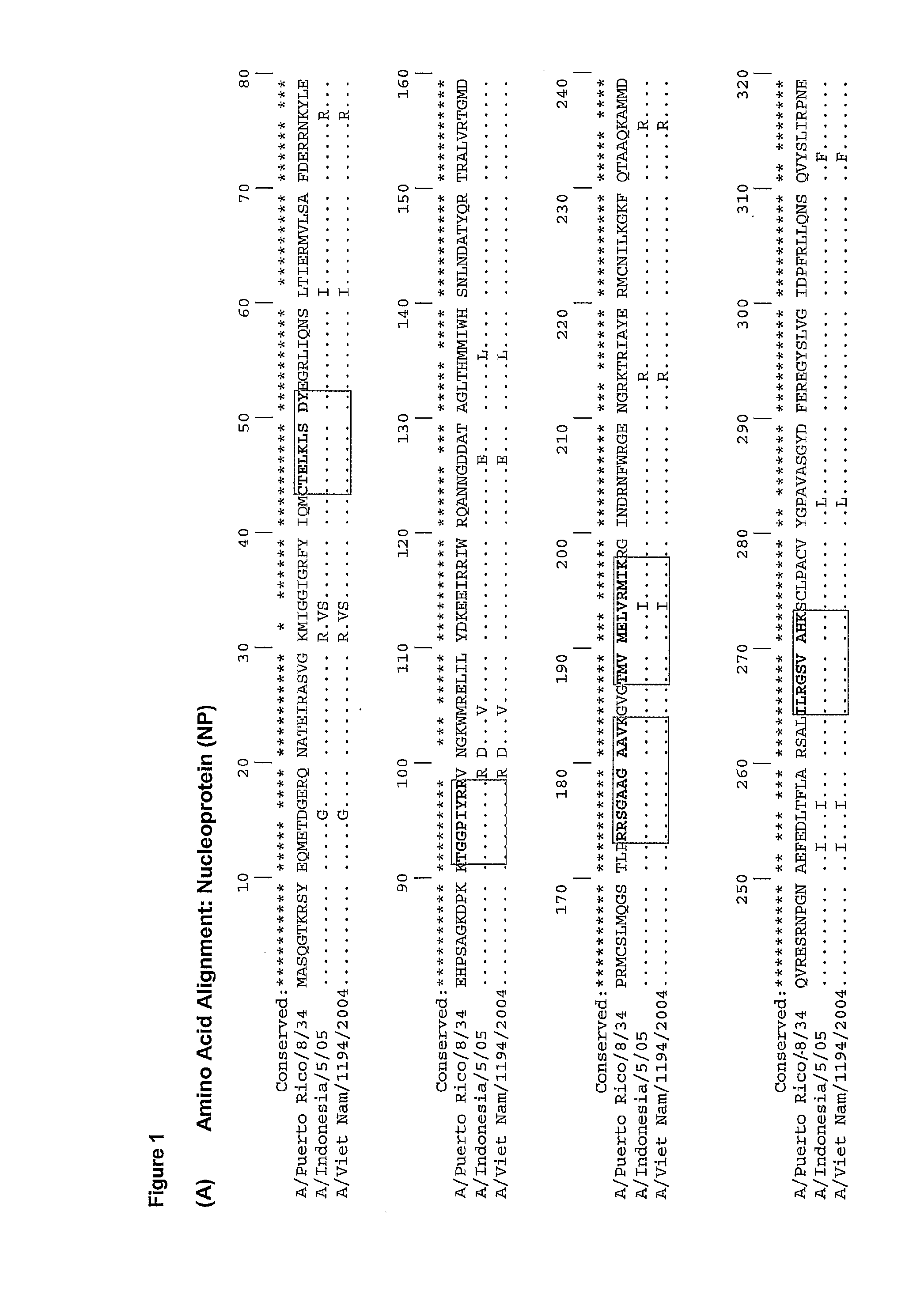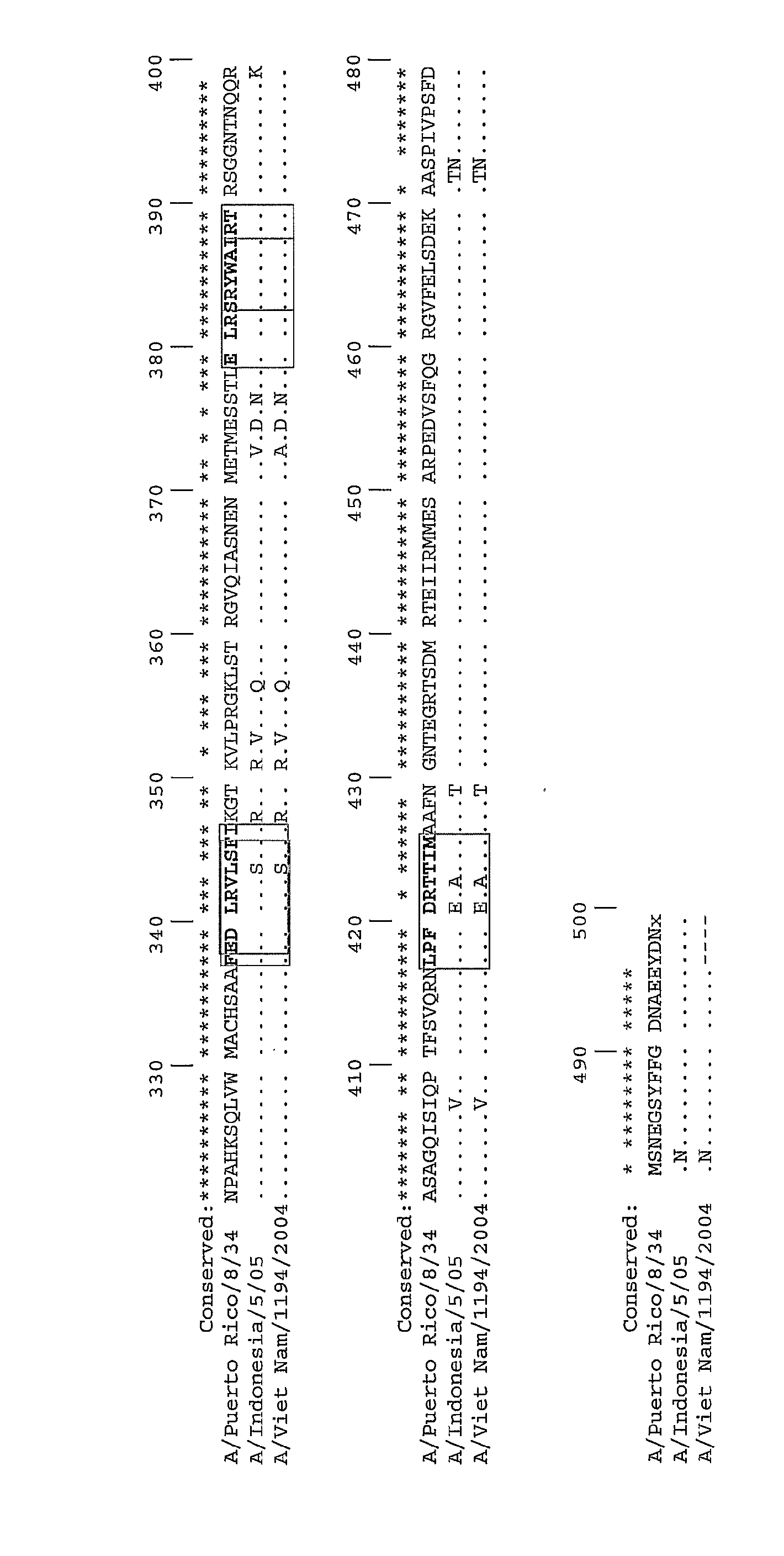Method of eliciting an immune response against pandemic influenza virus
a technology of pandemic influenza and immune response, applied in the field of eliciting or inducing an immune response, can solve the problems of eliciting poor cellular responses, generating significant morbidity and mortality, and subtypes also representing significant pandemic threa
- Summary
- Abstract
- Description
- Claims
- Application Information
AI Technical Summary
Problems solved by technology
Method used
Image
Examples
example
A. Materials and Methods
[0057]Ferrets: Juvenile female or male ferrets (3-5 month old), approximately 700-1500 g in weight were sourced from IMVS (SA). Ferrets were seronegative to currently circulating influenza (H1N1, H3N2, B viruses). Blood samples were collected immediately prior to each vaccination and prior to viral challenge. A further blood sample to check the antibody response to challenge was taken 14 days after exposure to virus or at the time of euthanasia. Bleeds were performed on anaesthetised (Ketamine / Medetomidine 50:50 0.1 ml / kg, reversed with Apitemazole) animals from the jugular or axillary veins, 4 sites, 1 ml each, using 19 to 23 gauge needle depending on the size of the ferret. Clinically affected animals were euthanased immediately following either a 10% body weight loss or exhibition of signs consistent with involvement of other organ systems eg. tremor, or abdominal discomfort.
[0058]Vaccine: The mixture of seasonal influenza antigen used for injection includ...
PUM
| Property | Measurement | Unit |
|---|---|---|
| body temperature | aaaaa | aaaaa |
| diameter | aaaaa | aaaaa |
| weight | aaaaa | aaaaa |
Abstract
Description
Claims
Application Information
 Login to View More
Login to View More - R&D
- Intellectual Property
- Life Sciences
- Materials
- Tech Scout
- Unparalleled Data Quality
- Higher Quality Content
- 60% Fewer Hallucinations
Browse by: Latest US Patents, China's latest patents, Technical Efficacy Thesaurus, Application Domain, Technology Topic, Popular Technical Reports.
© 2025 PatSnap. All rights reserved.Legal|Privacy policy|Modern Slavery Act Transparency Statement|Sitemap|About US| Contact US: help@patsnap.com



